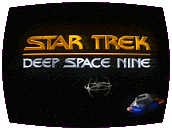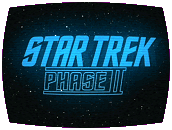Captain Power And The Soliders Of The Future

- Shattered
- The Abyss
- Wardogs
- Final Stand
- Pariah
- A Fire In The Dark
- The Mirror In Darkness
- The Room
- The Ferryman
- And Study War No More
- The Intruder
- The Rose Of Yesterday
- Flame Street
- Gemini And Counting
- And Madness Shall Reign
- A Summoning Of Thunder Part I
- A Summoning Of Thunder Part II
- The Eden Road
- Freedom One
- New Order Part I: The Sky Shall Swallow Them
- New Order Part II: The Land Shall Burn Them
- Retribution Part I
- Retribution Part II
Captain Power And The Soldiers Of The Future is a show that provides a snapshot of the state of programming aimed at pre-teen kids in the 1980s – as well as a snapshot of the ways that the show’s makers were trying to fight the status quo. It’s also, by coincidence, the crucible that helped to bring together some of the talent behind one of the major science fiction TV success stories of the 1990s.
With the monster success of the Star Wars toy range – the marketing rights to which George Lucas famously retained for himself when 20th Century Fox showed no interest in a sci-fi flick which obviously wasn’t going to get much of an audience – the connection between adventures on both the big and small screens and the toys they spawned was never more clear. In the 1980s, it became harder to tell which was the tail and which was the dog: series such as G.I. Joe and Masters Of The Universe rolled out an endless parade of ancillary characters, new enemies, and new costumes for the lead characters, all of which would be conveniently translated into toy form.
In 1984, with the administration of President Reagan loosening regulations in just about every sector of commercial activity in an attempt to stir up commerce and the economy, one deregulatory ruling in particular lifted long-standing limits on the amount of commercials that could be placed in any given hour of children’s programming, and also widened existing loopholes that essentially allowed the makers of children’s programming to turn that programming into extended-length advertisements for toys and video games, without any demands placed on that programming to provide its viewers with any sort of educational or moral reinforcement. It was during this era that children’s programming had an opportunity to become more adventurous, but often fell back on nihilism and commercialism instead.
It was also during this era that Captain Power And The Soldiers Of The Future was gestated, and became a battlezone of its own, between a toy company that helped to bankroll the series and demanded a showcase for the toys based upon it, a tight-knit group of experienced writers determined to create a more mature science fiction series for the younger set, and parents and legislators who ultimately just wanted the show off the air.
Captain Power was created by Gary Goddard and Tony Christopher of Landmark Entertainment Group, a company that has since become more closely identified with theme park rides. Goddard directed the live-action movie version of Masters Of The Universe earlier in 1987, and would later go on to design the original Klingon-themed ride at Las Vegas Hilton’s Star Trek: The Experience attraction, as well as the Terminator 2 3-D attraction at Universal Studios. Christopher is still the president and CEO of Landmark. The company had already seen success with its 1986 traveling stage show based on Masters Of The Universe, and with the creation of Captain Power, Landmark may well have been trying to create its own cast of characters that it could market in toy stores and on nationwide tours, rather than licensing those characters from Mattel (the toy company behind the He-Man action figures). Mattel clearly saw potential as well, and pitched in financially toward Captain Power’s production.
He-Man was also the point of origin for the two writers who penned the majority of Captain Power’s adventures. Having both worked on the Masters Of The Universe animated series in the early ’80s, writers J. Michael Straczynski and Larry DiTillio were well acquainted with one another and with the pitfalls and opportunities inherent in children’s TV. With the FCC’s restrictions loosened, Straczynski and DiTillio saw a chance to make an edgier, more mature science fiction series that wouldn’t talk down to its audience. But the writers found themselves facing an instant stumbling block: as part of the licensing agreement with Landmark, Mattel demanded that a certain portion of each episode of Captain Power would consist of the special effects sequences to interact with the action figures and vehicles. Straczynski and DiTillio would be contractually required to surrender part of each episode’s running time to these “interactive” effects, which also took time away from scripts, dialogue and character development. Appointed as the show’s executive story editor, Straczynski immeidately railed against these limitations, while still being contractually obliged to follow them.
Another innovation built into Captain Power’s DNA was its groundbreaking use of computer graphics to create some of its characters. By modern standards, these computer graphics were primitive at best: the amount of time needed to render animted, computer-generated characters for a weekly television show, with the computer power available in 1987, meant that cutbacks had to be made. The characters were crudely superimposed into the live action footage, with flying characters like Soaron casting no shadows on the ground. Other niceties that quickly fell by the wayside were textures on the surfaces/skins of computer-animated characters, and anti-aliasing – an color-dithering illusion used by computer graphics artists to prevent diagonal lines from looking jagged. Few self-respecting (or consistently employed) CGI artists can imagine deploying any kind of animation without those elements today. Making things even more complicated for the special effects department was that most of the triggering signals for Mattel’s interactive toys had to be built into both these computer generated sequences and the extensive miniature sequences devised by a British special effects artist, Ron Thornton, who had spent the early ’80s working on such series as Doctor Who, The Tripods and Blake’s 7.
The conflicting forces already straining against each other in the show’s pre-production phase gave the resulting series a schizophrenic feel. Stracynski, DiTillio and guest writers such as Marc Scott Zicree were fighting to write the show for a young adult audience, complete with violence, cruelty, occasional mild profanity, and even implied romance for some of the characters. Toward the end of the season, a Hitler Youth-style organization became a primary concern of Captain Power and his band of freedom fighters, and in the series’ final episode, one of the main characters made the ultimate sacrifice to cover the others’ escape – and almost unheard-of development for children’s television.
Captain Power premiered in syndication in September 1987, not tied to any particular network. It often wound up on those stations that had previously been independent stations and now aligned with the fledgeling Fox network, with time slots varying wildly from market to market. With the national conversation about the merits – or lack thereof – of children’s TV bubbling toward a boil, Captain Power found itself at the center of that conversation.
In addition to concerns about the show’s scripts and dialogue being too mature, a November 1987 Time Magazine article points out that the well-publicized interactive toys were of increasing concern to consumer advocate groups and parents alike:
The activists are especially upset about a new wave of “interactive” shows, like Mattel’s Captain Power and the Soldiers of the Future. The show, a live-action space adventure, enables children to play along at certain points by shooting at villains on-screen with a special Power Jet weapon (cost: $30 to $40). An electronic signal responds to each “hit” and tots up the . player’s score. Charren argues that by encouraging children to buy an expensive toy to participate, such shows unfairly divide the young audience into “the haves and the have-nots.”
More to the point was the frequent complaint that those who could afford the toys found that they didn’t interact with the television show as advertised: the strobing “targets” built into the series in post-production were too small, and the producers fought against making them too obvious against the rest of the footage. According to an interview with associate producer John Copeland in the April 1994 issue of Cinefantastique, engineers from Mattel traveled to the show’s production base in California with product samples, proved that the toys worked when they “cranked the color and the chrome” in product tests (meaning that the television used to test the toys was set to display vastly oversaturated colors), and then placed the blame on the makers of the TV series.
The mature themes of the show’s scripts also got the attention of critics, and not in a good way. In 1988, tired of the thankless grind of trying to please too many masters, Straczynski vacated the post of executive story editor, leaving the series’ creative direction to DiTillio; Straczynski had gotten an offer to serve in a similar capacity on the revived (but troubled) Twilight Zone series, where he would have much fewer creative restrictions and, perhaps more importantly, an audience to whom toys were not being aggressively marketed at the expense of cohesive storytelling.
By this time, however, Straczynski had already written what would end up being the show’s fatalistic grand finale. DiTillio and other writers wrote or outlined virtually the entire second season, only to have production closed down when Captain Power was cancelled.
J. Michael Straczynski went on to become the head writer of the second and third seasons of the revived Twilight Zone, and would spend rest of the 1980s and the early ’90s writing scripts for such series as Jake and the Fatman and Murder, She Wrote. By 1989, Straczynski had also devised the premise for another science fiction action-adventure series – this one not aimed at kids, and with the exploration of mature political and religious themes built into its backstory. After failing to pitch his idea about a space station located at a place of strategic and political importance to Paramount, he sold it Warner Bros. and developed the idea through the early 1990s. It premiered early in 1993, and Captain Power fans already knew the name of the place: an early Captain Power episode mentioned that Lt. Michael “Tank” Ellis was born on the “Babylon 5 genetic engineering colony.” Captain Power veterans John Copeland, Larry DiTillio and Ron Thornton all migrated to Babylon 5 with Straczynski, with Thornton being the author of the show’s extensive (and Emmy-winning) computer-animated look, with technology that had evolved explosively in the six years since Captain Power went into production.
Landmark Entertainment Group is still in existence today, with headquarters in both the U.S. and Korea. Most of its business continues to be in the ride/attraction business, but they have occasionally tried to return to the notion of originating a children’s entertainment franchise with a heavy emphasis on interactivity: a 1994 animated series, Skeleton Warriors, spawned a spinoff video game for the Sony Playstation; Gary Goddard again created that series. Another attempt at an interactive experience tied to an ongoing series, Futurezone, is in development at Landmark as of 2011.
The cast of Captain Power has similarly recovered from the experience. Immediately moving on to the role of Davy Crockett in a Disney series of the same name, actor Tim Dunigan continued landing guest roles until giving up acting in 2002. Sven Olsen continued plying his tough-guy trade in such shows as The Flash and Baywatch, and numerous films. Canadian actress Jessica Steen may have kept the highest profile, with regular roles in Homefront, Earth 2 and Flashpoint, and guest-starring roles in The Outer Limits and Stargate SG-1, where she was the first actress to play the role of Dr. Elizabeth Weir; when the character was carried over as the lead regular on the spinoff series Stargate Atlantis, Steen was replaced by fellow Canadian Torri Higginson. David Hemblen made appearances in the series based on both Robocop and William Shatner’s TekWar novels, eventually landing the regular voice role of Magneto in the ’90s animated X-Men series before becoming a regular on the Gene Roddenberry series Earth: Final Conflict.
As for Captain Power and other shows of its ilk, their window of opportunity narrowed in 1990 with the creation of the FCC’s Children’s Television Act, which placed stricter limits on the amount of time commercials could take up per hour of children’s programming, as well as on the content of the shows themselves. In theory, that should’ve taken care of the problems inherent in children’s programming in the mid 1980s, but the debate over children’s programming serving as program-length toy commercials, and the effectiveness of the CTA in combatting that problem, rages to this day – a much longer struggle than Captain Power’s fictional war between man and machine.

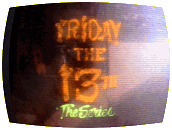

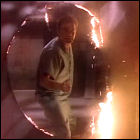 Cast: John D. LeMay (Ryan Dallion), Wendy Robey (Mickey Foster), Chris Wiggins (Jack Marshak), Cliff Gorman (Dr. Howard), Elva Mai Hoover (Jean Flappen), Doris Petrie (Dr. Price), Michael Copeman (Jim Bronson), Alan Rosenthal (Anaesthetist), Frank Perry (Flower Vendor), Vinetta Strombergs (Duty Nurse), Deborah Kimmett (Obs Room Nurse), Lynn Vogt (Psychiatric Nurse), Hal Eisen (Code Blue Doctor), Wendy Lum (Station Nurse), Peggy Francis (Surgical Nurse), Candace Jennings (Hooker), Susan Spencer (Emergency Nurse)
Cast: John D. LeMay (Ryan Dallion), Wendy Robey (Mickey Foster), Chris Wiggins (Jack Marshak), Cliff Gorman (Dr. Howard), Elva Mai Hoover (Jean Flappen), Doris Petrie (Dr. Price), Michael Copeman (Jim Bronson), Alan Rosenthal (Anaesthetist), Frank Perry (Flower Vendor), Vinetta Strombergs (Duty Nurse), Deborah Kimmett (Obs Room Nurse), Lynn Vogt (Psychiatric Nurse), Hal Eisen (Code Blue Doctor), Wendy Lum (Station Nurse), Peggy Francis (Surgical Nurse), Candace Jennings (Hooker), Susan Spencer (Emergency Nurse)
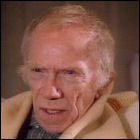 Cast: John D. LeMay (Ryan Dallion), Wendy Robey (Mickey Foster), Chris Wiggins (Jack Marshak), Ray Walston (Jay Star), David Hewlett (Cal), Bob Aarrons (Charlie), Michelle George (Mrs. Forbes), Jennifer Griffin (Linda), David Clement (Carmine), Anthony Bekenn (Mrs. Briggs)
Cast: John D. LeMay (Ryan Dallion), Wendy Robey (Mickey Foster), Chris Wiggins (Jack Marshak), Ray Walston (Jay Star), David Hewlett (Cal), Bob Aarrons (Charlie), Michelle George (Mrs. Forbes), Jennifer Griffin (Linda), David Clement (Carmine), Anthony Bekenn (Mrs. Briggs)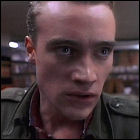 the age of 20; Hewlett would later become much better known as laconic Stargate project scientist Dr. Rodney McKay, a recurring guest so popular on
the age of 20; Hewlett would later become much better known as laconic Stargate project scientist Dr. Rodney McKay, a recurring guest so popular on 
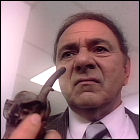
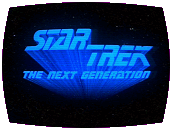




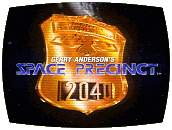

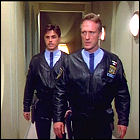 Notes: With his reclusive nature, his obsessive avoidance of human contact, his aerospace company and, of course, his name, the character of Humes is obviously based on Howard Hughes (1905-1976). This episode of Space Precinct was the one distributed via VHS videotape to U.S. television stations as a “taster”; the tape was intended to impress program directors of independent stations enough to pick the show up from North American distributor Grove Television. Guest star Will Barton appeared in
Notes: With his reclusive nature, his obsessive avoidance of human contact, his aerospace company and, of course, his name, the character of Humes is obviously based on Howard Hughes (1905-1976). This episode of Space Precinct was the one distributed via VHS videotape to U.S. television stations as a “taster”; the tape was intended to impress program directors of independent stations enough to pick the show up from North American distributor Grove Television. Guest star Will Barton appeared in 